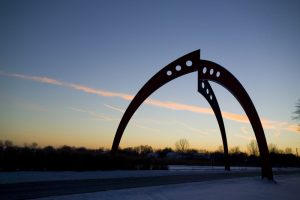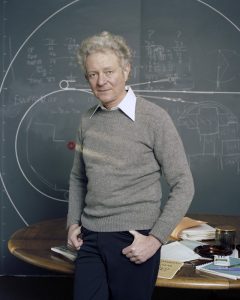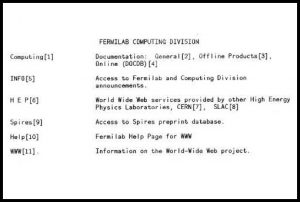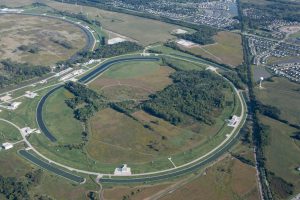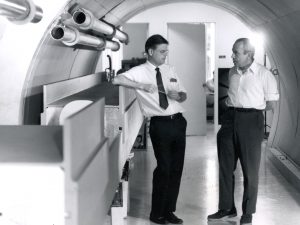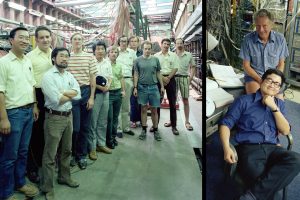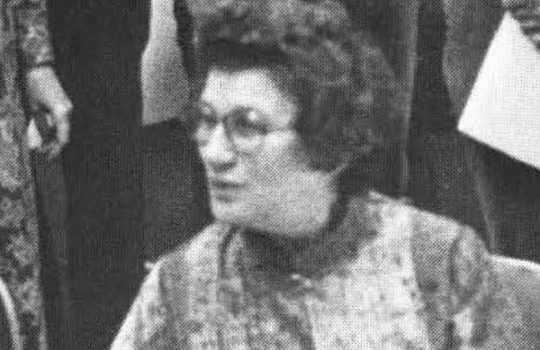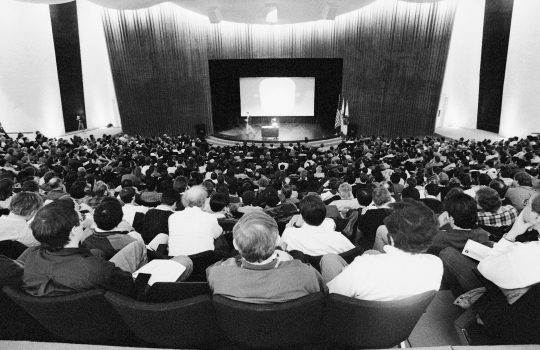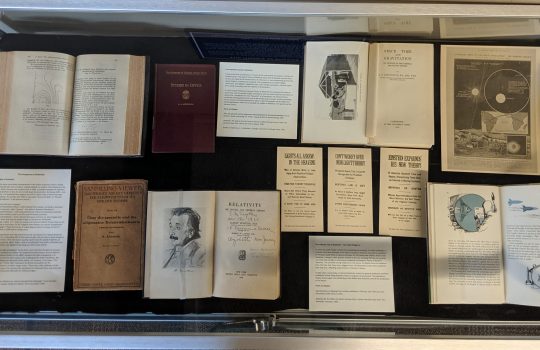June 15, 1967, is Fermilab’s official birthday — the day employees first showed up to work at National Accelerator Laboratory. Other momentous milestones also happened in June. Read on.
June 1978: “Broken Symmetry” sculpture erected
Robert R. Wilson designed the Broken Symmetry sculpture that stands at Fermilab’s west entrance. The sculpture weighs 21 tons, is 50 feet tall, and was constructed using steel deck plates from the aircraft carrier the USS Princeton. The lab had acquired scrap steel from the U.S. Navy for use as shielding.
June 1979: Lederman becomes lab director
In June 1979, Leon Lederman became Fermilab’s second director. Lederman, a member of the faculty of the University of Columbia, had been involved with the lab since the beginning; he had proposed the idea of a “truly national laboratory” in 1963, served as chair of the lab Users Committee, and led the Fermilab experiment that discovered the bottom quark in 1977.
June 1992: Fermilab’s first website
Tim Berners-Lee, a British scientist at CERN, developed the world wide web in 1989 to meet the needs of high-energy physicists. Fermilab’s first website, set up in June 1992 by the Computing Division, was one of the earliest in the United States.
June 1, 1999: Dedication of the Main Injector
The Main Injector was dedicated on June 1, 1999. This new accelerator, which is approximately two miles around, replaced the Main Ring accelerator as the proton injector for the Tevatron and ushered in a new era for the Fermilab accelerator complex.
June 15, 1967: First day of work
On this day, the lab’s earliest employees and a few employees from the Atomic Energy Commission and DUSAF (the architectural and engineering firm responsible for much of Fermilab’s construction) moved into the lab’s first offices. These offices were located on the 10th floor of the newly built Oak Brook Executive Plaza (1301 W. 22nd St., Oak Brook, Illinois). At the time, there was only one tower at Oak Brook Executive Plaza, and there were far fewer buildings near it than there are today, giving these pioneers an unobstructed view of the Illinois farmland. The building was selected for its convenient location between the site chosen for the National Accelerator Laboratory at Weston, Illinois, and O’Hare International Airport. Conditions were Spartan; for its first few weeks of operation, the Oak Brook office lacked furniture and office partitions.
June 30, 1977: Discovery of the bottom quark
On this day, scientist Steve Herb gave the official announcement at a seminar of the findings of E288, namely, the discovery of the upsilon particle. E 288 was an experiment in the proton fixed-target area led by Leon M. Lederman and made up of scientists from Columbia University, Fermilab and the State University of New York at Stony Brook. The experiment sought to study the rare events that occur when a proton beam collides with a platinum target, producing a pair of muons or electrons. The experimenters observed a bump in the number of events at 9.5 GeV, indicating the existence of the upsilon particle, which was later understood to be the bound state of the bottom quark and its antiquark.

